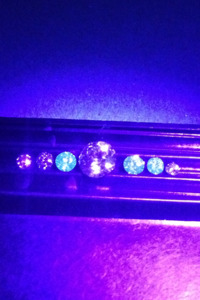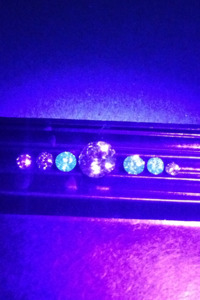- Joined
- Jul 23, 2012
- Messages
- 20,250
Ill start off by saying no i dont think my diamond got switched.....
but i got my ring back from JA yesterday and i stuck it under my black light. My largest three diamonds are certed as no fluor, but the last three are so small they were uncerted so i wanted to see if they had and fluor.... im a nerd like that
well they dont, but my center stone has the slliiiiightest of fluor to it, though its not listed on the cert. I had checked it once while it was in the solitaire setting, and i didnt notice it, but it is hard to notice. The only reason i could tell it wasnt just the reflection of the light was because it was slightly bluer than the onther 4 stones.
so sense it does technically have fluor, i would have assumed it would be graded as "negligible"... why wasnt it?
but i got my ring back from JA yesterday and i stuck it under my black light. My largest three diamonds are certed as no fluor, but the last three are so small they were uncerted so i wanted to see if they had and fluor.... im a nerd like that
well they dont, but my center stone has the slliiiiightest of fluor to it, though its not listed on the cert. I had checked it once while it was in the solitaire setting, and i didnt notice it, but it is hard to notice. The only reason i could tell it wasnt just the reflection of the light was because it was slightly bluer than the onther 4 stones.
so sense it does technically have fluor, i would have assumed it would be graded as "negligible"... why wasnt it?









300x240.png)